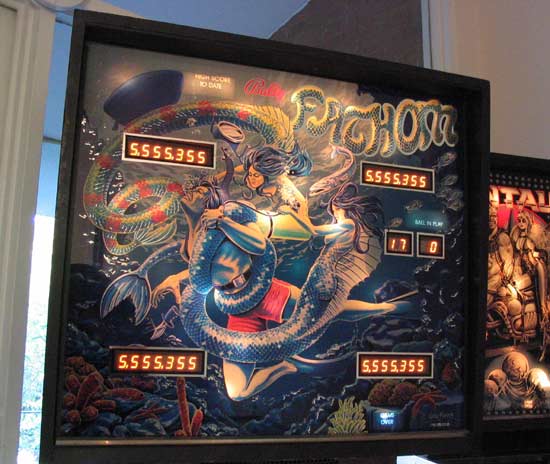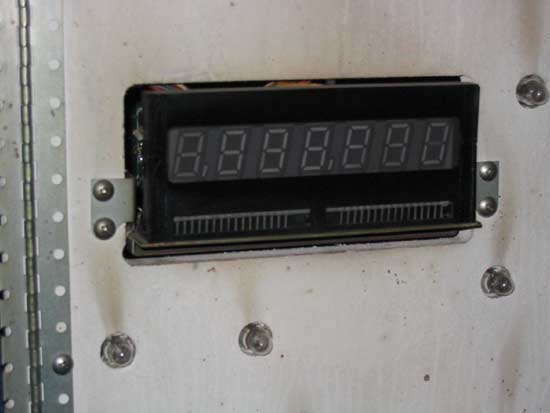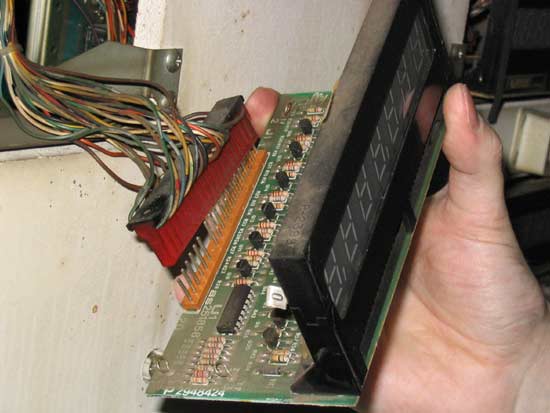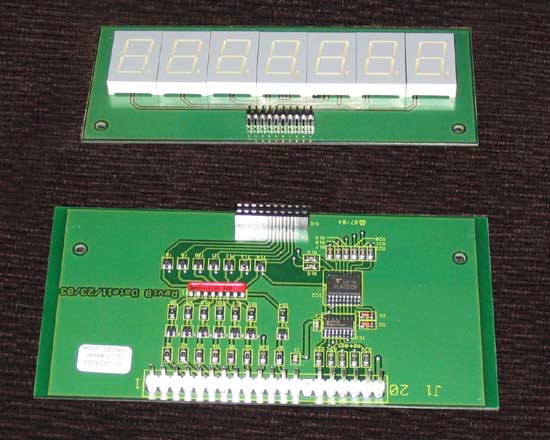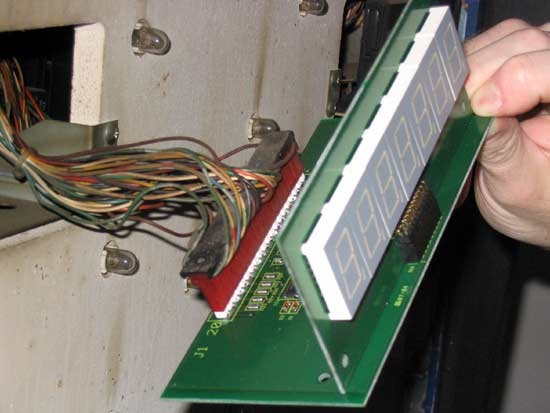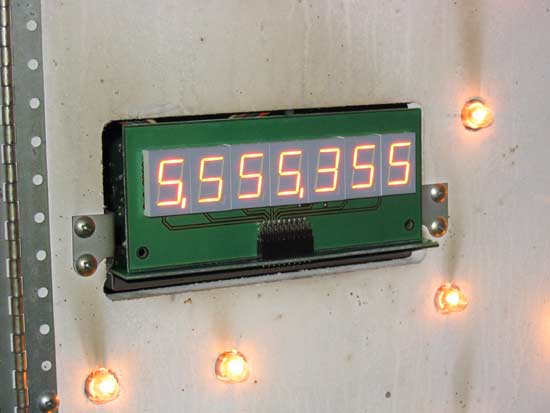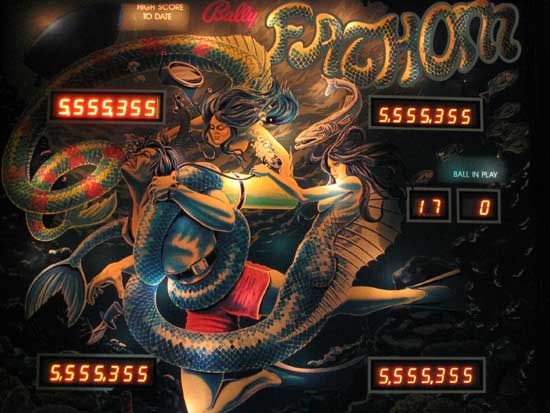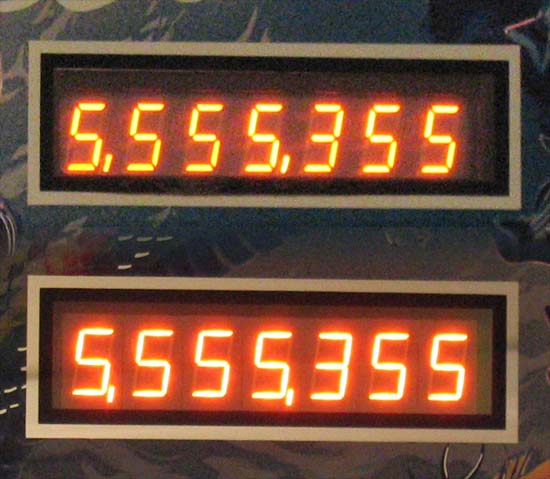|
|
|
BRIGHT IDEAS
|
|
Almost a year ago we told you all about the replacement seven segment and alpha-numeric displays from PinLED. They are something special because they are low voltage LED displays designed specifically to replace the vacuum tube displays on older solid state games. These are becoming harder to find and suffer from slow decay, so a modern solid state solution was sorely needed and that's where PinLED came in. Since our original report PinLED have expanded their range to include alpha-numeric and dot matrix displays while keeping the low voltage and long life characteristics. So to find out just how they compare and how easy they are to fit, we tried one of their seven digit displays and compared it to the original.
We took this lovely Fathom and tried to install a replacement PinLED display in the player 1 position to see how it compared and what problems we encountered. The original displays looked just fine but could they be better? As usual, the first thing to do is depower the game. No matter how small the repair, never do it with the power on. Then - carefully - remove the backglass to reveal the displays.
Removal of the old display is easy once you know how. Just lift it up and slide it forward and pull it out of the backbox.
There's only one connector to deal with, so wiggle that one off the board and put the old display somewhere safe for now.
The new display comes in two parts and although it is theoretically possible to plug them together the wrong way, one brief moment trying to install it will show you the error of your ways. So with the boards plugged together, let's connect them up.
It's a straight replacement and no intelligence is required to plug on the connector and put the board back into the backbox and power up the game to check it.
Hoorah! The game still works and so does the new display. So we put the backglass back into the game and stand back to admire our hard work.
Now, immediately you can see that the new PinLED display is much brighter that the original displays. Much MUCH brighter. The original displays looked just peachy but now we can see what we were missing out on. In fact, the new display is so bright, it might be just too bright. In a darkened room it's almost painful to stare at it for any length of time. PinLED may like to think about adding a variable resistor so you can turn the intensity down if you're using them in a dimly lit room or trying to match some existing displays. Although not obvious from a distance, the displays do look a bit different in another way. The digits are much thinner and the segments are longer.
As I say, from a distance this isn't a problem, but if you were putting new displays right next to old ones it would certainly be noticeable. But they got the colour spot on. You look at these displays and nod in satisfaction. If you are replacing all the displays in a game you'll be very happy with the results. The brightness and crispness of the new units is quite stunning. The process is as simple as it could be and you no longer have to worry about outgassing or high voltage problems.
At present, replacing one or two displays isn't really practical without showing the limitations of your older units, so I'd suggest buying the lot and keeping the old working devices as spares or sell them to recover part of the cost. Thanks go to Jürgen Jakobi of PinLED for the display and Richard Wade for the use of his Fathom.
|

